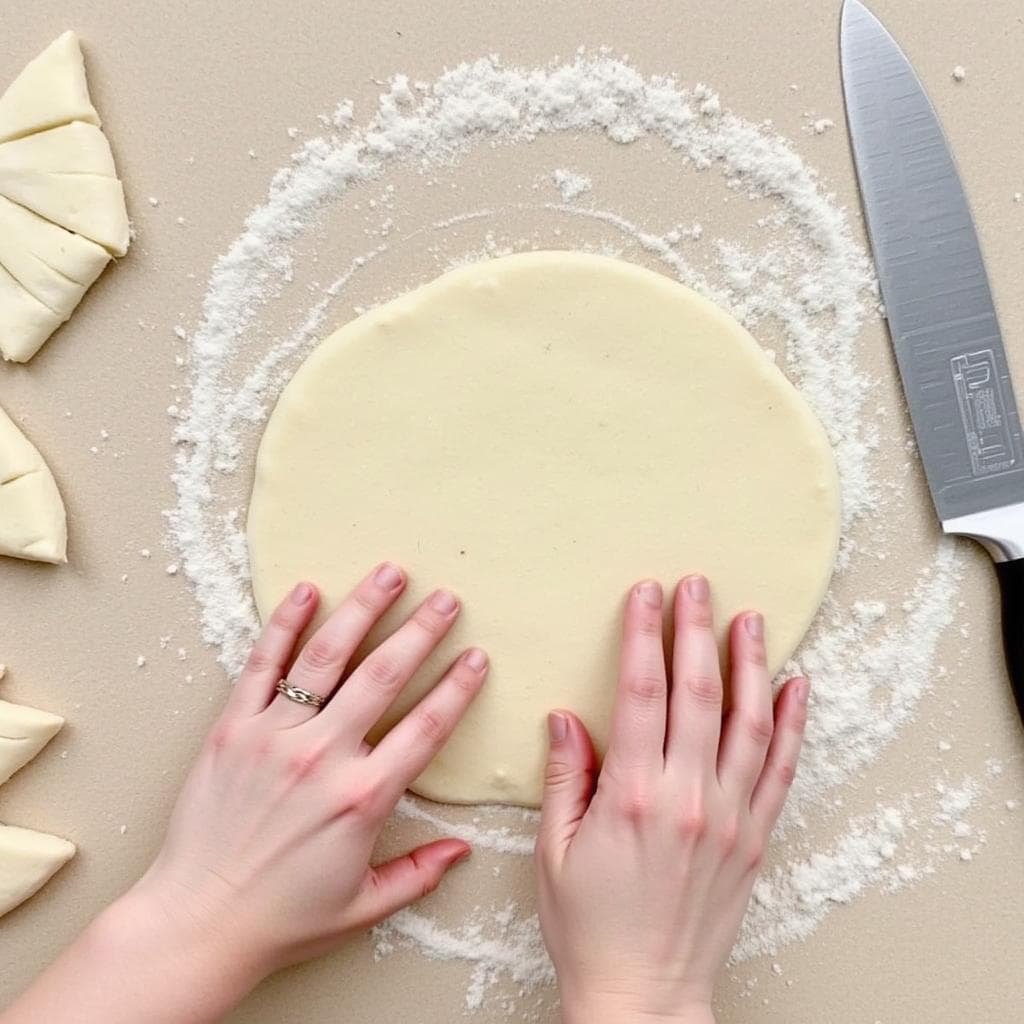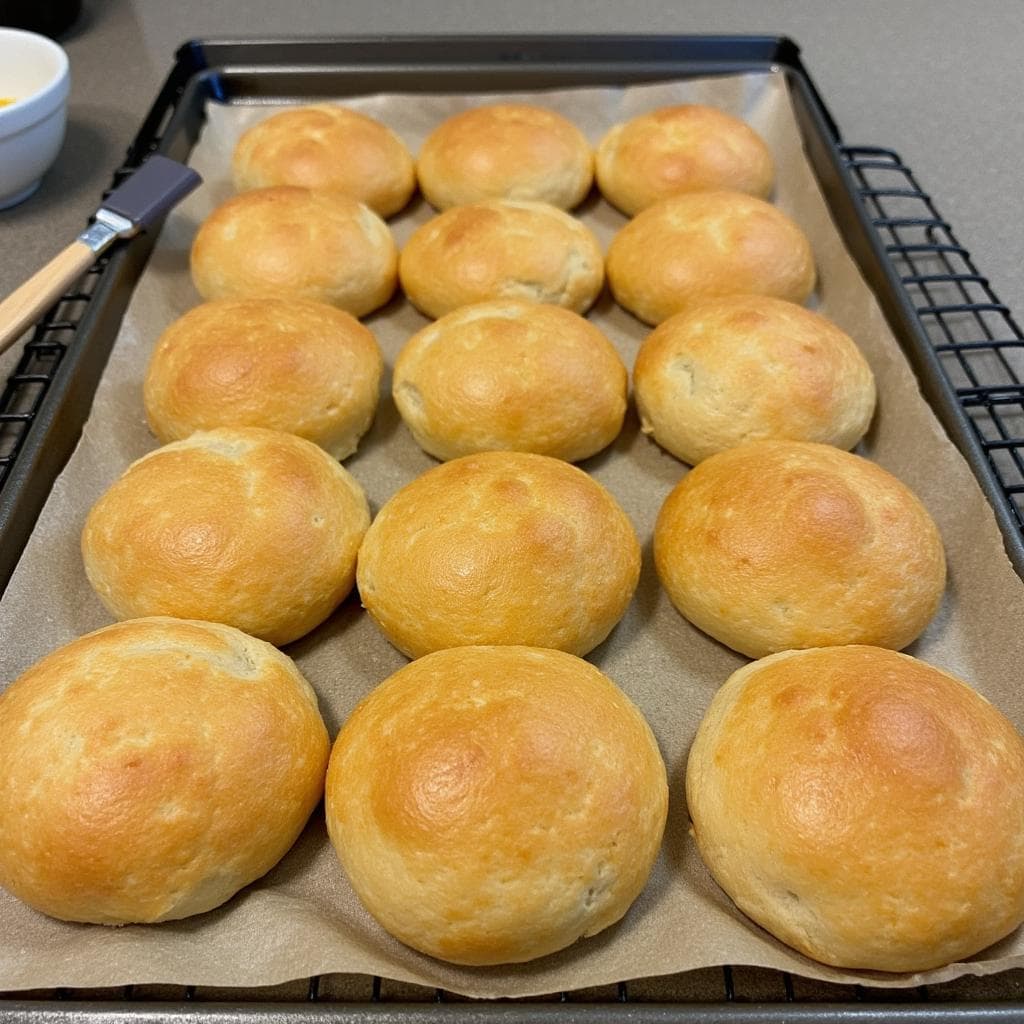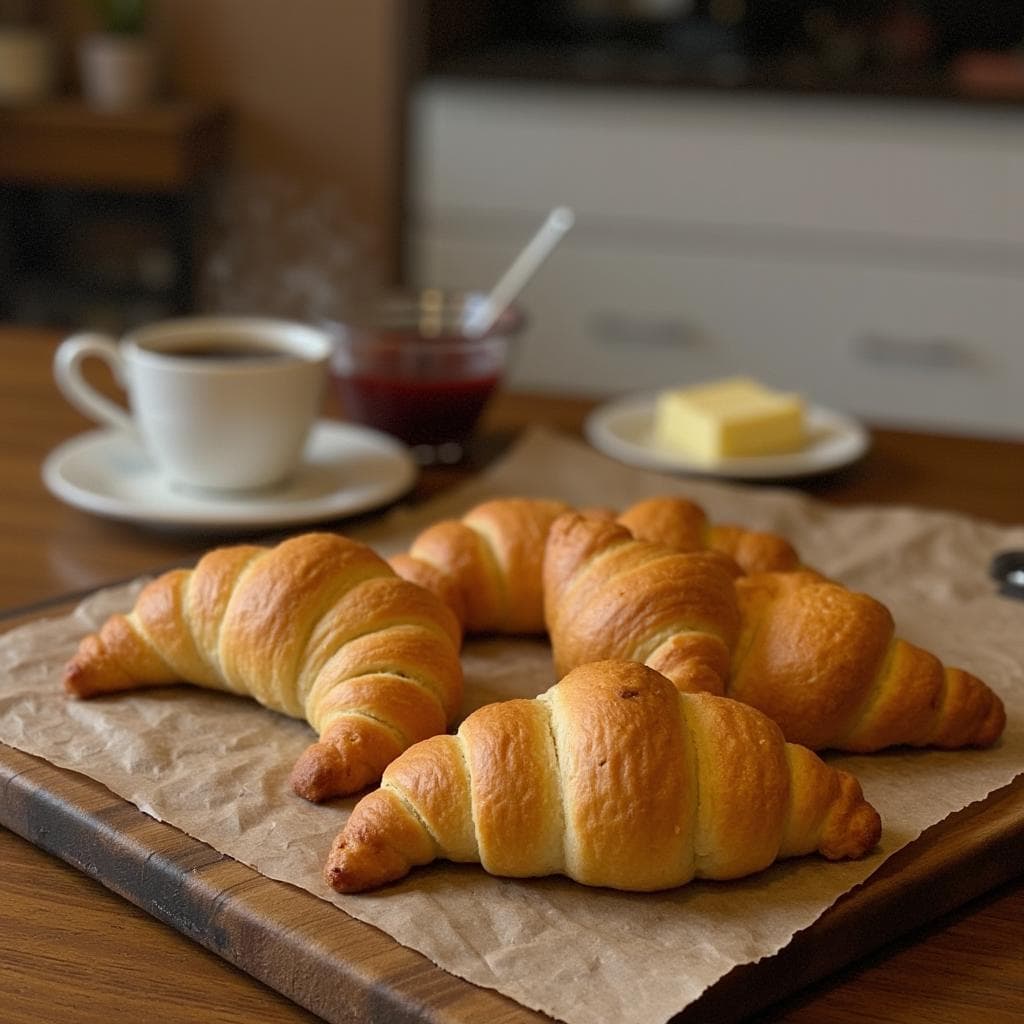The gipfeli recipe stands as a proud symbol of Swiss breakfast culture. Its flaky layers, buttery aroma, and delicate shape bring comfort to the table. Many people think of it as the Swiss take on croissants, yet gipfeli has its own distinct character. Its lighter texture and subtle sweetness distinguish it from the classic French version.
Before starting, it helps to understand the tradition behind this baked treat. The Swiss kitchen, known for bread and pastries, has adapted techniques over centuries. The result is a dough with fine layers, crisp outside, and a soft, airy interior. To achieve that result, one must follow step-by-step guidance and pay close attention to details.
Swiss baking traditions are part of the rich Swiss culture. Learning these practices helps grasp the cultural significance of such pastries. Using best baking techniques from experienced bakers can make a noticeable difference. Selecting high-quality European butter is essential for a successful gipfeli recipe.
What Makes the Gipfeli Recipe Unique?
The gipfeli recipe produces a pastry that balances richness and lightness. Butter layers create flavor and crispness. Careful folding and rolling give a subtle airy texture. Yet, it differs from the heavier French croissant in subtle ways. For instance, gipfeli often tastes less sweet, with a more delicate crumb. It pairs perfectly with coffee, jam, or mild cheese spreads.
Gipfeli are simpler to shape once you understand the dough structure. Many Swiss bakers have passed down the craft through generations. Although each family might add its own twist, the method rarely changes much. This pastry stands out at breakfast or brunch gatherings, offering a gentle start to the day.
Making gipfeli at home might seem challenging. However, by following the right steps and applying patience, you can achieve flaky perfection. Keep reading to find out how to master this gipfeli recipe at home.
History Behind the Gipfeli Recipe
Swiss Roots And European Influences
While the word “Gipfeli” might sound unique, its roots trace to traditional European pastries. The Swiss took inspiration from the Austrian Kipferl, which predated the French croissant. Over time, these pastries evolved into the gipfeli recipe we know today. The shape resembles a crescent, symbolizing heritage and time-honored methods.
Bakers developed the dough technique during times when butter was precious and bread mattered. Thus, each pastry carried meaning and pride. Traditional bakers rose early to prepare fresh batches for local markets. Modern bakeries still follow certain old customs, even with new equipment. This balance between tradition and modern convenience keeps gipfeli relevant.
Learning this gipfeli recipe connects you to a past where bread-making was an art form. It creates a bridge between old traditions and your modern kitchen.
Differences Between Gipfeli and Croissants
Texture and Flavor Profile
At first glance, gipfeli and croissants look similar. However, subtle differences set them apart. The gipfeli recipe calls for a dough that is often lighter in sweetness. Swiss bakers may add a touch of milk, making the dough tender. The result is a pastry less rich in butter taste compared to a classic croissant, yet still layered and flaky.
In addition, gipfeli often have a slightly denser crumb. Croissants, by contrast, embrace a lighter, more hollow interior due to intense lamination. This difference in texture also affects how each pastry pairs with spreads. While croissants love rich butter and chocolate, gipfeli shine with subtle fruit jams, mild cheeses, or even a thin layer of honey.
If you desire a pastry that embraces subtlety, the gipfeli recipe might suit you better than the French classic.
Essential Ingredients and Equipment for the Gipfeli Recipe
Key Ingredients For a Perfect Gipfeli Recipe
- Flour: Choose a high-quality bread flour with moderate protein. This gives structure and a good chew.
- Butter: High-fat butter creates flaky layers. Use unsalted butter with no added flavors.
- Milk: A splash of milk softens the crumb and adds mild sweetness.
- Yeast: Active dry yeast lifts the dough, making it airy.
- Sugar: A small amount of sugar enhances flavor without overwhelming sweetness.
- Salt: Balances the sweetness and highlights other flavors.
The ratio of these ingredients matters. Too much butter and you risk greasiness. Too little butter and the pastry becomes dry. Strive for a balanced approach.
Necessary Tools and Equipment for Making Gipfeli
- Rolling Pin: A sturdy rolling pin is key for shaping and laminating.
- Mixing Bowl: A large, clean bowl helps you work the dough.
- Pastry Brush: Helpful for applying egg wash.
- Baking Sheet: Nonstick or lined with parchment paper to prevent sticking.
- Damp Towel: Keeps your dough from drying out during rest periods.
Simple kitchen items work fine. However, a digital scale helps with precise measurements, making the gipfeli recipe more predictable.
Step-by-Step Instructions for Gipfeli Pastries
Preparing the Dough Base
- Activate The Yeast:
Add yeast to lukewarm milk. Stir gently with sugar. Wait until bubbles form, indicating yeast activity. - Combine Dry Ingredients:
In a mixing bowl, add flour and salt. Mix briefly to blend them. Add the yeasty milk mixture. - Form The Dough:
Stir to form a shaggy dough. Add softened butter in small chunks. Knead gently until the dough becomes smooth.Tip: If the dough feels too dry, add a tablespoon of milk. If too sticky, add a pinch of flour.
The dough should feel soft but not overly wet. Once you achieve the right consistency, cover with a damp towel and let it rest.
First Rest and Folding for Gipfeli Dough
- First Rise:
Let the dough rest in a warm spot. Wait until it doubles in size, usually about 1-2 hours.Tip: Do not rush this step. This rise affects final texture. - Deflate and Shape Into a Rectangle:
Press down the risen dough gently. Shape into a flat rectangle. Wrap in plastic and chill.Cooling the dough makes it easier to roll and incorporate butter layers.
The dough’s temperature matters. Chilled dough rolls more smoothly and resists tearing.
Incorporating Butter Layers in the Gipfeli Recipe
- Prepare the Butter Block:
Take chilled butter and pound it into a flat rectangle. Keep the butter cool but pliable. - Lamination Process:
Roll out the dough into a larger rectangle. Place the butter block in the center. Fold dough edges over butter, encasing it like a package. - Roll and Fold:
Roll the dough with butter inside to a large rectangle. Fold it into thirds. Rotate the dough and repeat rolling and folding. Repeat this process at least 2-3 times.Tip: Chill the dough between folds to keep butter layers distinct.
Work gently to avoid tearing dough. Each fold creates more layers, bringing you closer to the ideal flaky texture.
Shaping the Gipfeli recipe
- Final Rest Before Shaping:
After the final fold, wrap the dough and chill again. Cold dough shapes better. Allow 30-60 minutes. - Cutting and Shaping:
Roll the chilled dough into a large, thin sheet. Cut triangles with a sharp knife. Roll each triangle from the wide end to the tip, forming a crescent shape. - Second Rise:
Place shaped gipfeli on a lined baking sheet. Cover lightly and let them rise until slightly puffy, about 45-60 minutes.
Do not overproof. Too long, and the layers might collapse. Aim for a gentle puffiness, not full doubling.

Baking Your Gipfeli Recipe
- Egg Wash:
Mix one egg yolk with a tablespoon of milk. Brush the surface of each pastry. This gives a golden crust. - Bake:
Preheat oven to about 200°C (392°F). Bake for 12-15 minutes until golden brown. Rotate the tray once midway for even baking. - Cooling:
Transfer gipfeli to a wire rack. Let them cool slightly before serving.
Tip: Enjoy warm, as their flavor shines when fresh.
Patience at each step leads to crisp layers and a tender crumb. The gipfeli recipe rewards your effort with a delightful pastry.

Troubleshooting Common Issues with Gipfeli
Dough Too Dry or Too Sticky?
If your dough feels too dry, add a small amount of milk and knead gently. If too sticky, dust lightly with flour. Add increments slowly to prevent drastic changes.
Butter Leaking During Folding?
If butter leaks, it might have softened too much. Chill the dough to re-solidify butter. Work quickly during folds.
Not Enough Layers?
If you want more flaky layers, add another fold cycle. Do not overdo it, as too many folds can toughen the dough.
Small adjustments help correct issues and produce a perfect gipfeli recipe.
Serving Suggestions for Gipfeli Pastries
Pairing With Beverages
Gipfeli shine alongside a cup of strong coffee or a mild tea. Hot chocolate also pairs nicely, providing sweetness that complements the pastry’s buttery flavor. Fresh juice or a light smoothie works for those who want a bright, morning lift.
Spreads and Accompaniments
Serve gipfeli with fruit jam, honey, or mild cheese spreads. Another option is a thin slice of ham for a savory twist. Nut butter also provides an interesting contrast. The pastry’s subtle taste welcomes a variety of toppings.
Breakfast or Brunch Buffets
Set out a basket of freshly baked gipfeli at a brunch table. Accompany them with simple omelets or scrambled eggs. Offer a range of spreads and let guests create their perfect bite.
Storage and Reheating Tips for Gipfeli
Short-Term Storage
Place leftover gipfeli in a breathable container at room temperature for up to one day. Avoid sealing them tightly, as trapped moisture may soften the flaky crust. You can wrap them lightly in parchment paper.
Longer Storage
For longer storage, freeze them. Wrap each cooled pastry in plastic, then store in a freezer-safe bag. This approach keeps them fresh for about 2-3 weeks. When you crave a gipfeli, thaw at room temperature and warm in a low oven for a few minutes.
Do not refreeze once thawed. Maintaining quality depends on careful handling.
Variations on Gipfeli Recipes
Whole Grain Gipfeli
Replace part of the white flour with whole wheat flour. This adds a nutty flavor and slight density. Keep the ratio balanced to avoid heavy pastries.
Chocolate-Filled Gipfeli
Add a small piece of dark chocolate at the wide end of the dough triangle before rolling. Brush with a light glaze after baking for a hint of sweetness.
Savory Herb Gipfeli
Sprinkle chopped herbs or grated cheese inside the dough folds. This creates a savory pastry perfect with soups or salads.
Do not overload with fillings. Keep it subtle to maintain texture and structure.
Cultural Significance and Local Variations of Gipfeli
Regional Twists Across Switzerland
Different Swiss regions might tweak the gipfeli recipe by adding local ingredients. Some bakers might add a hint of nutmeg, while others prefer a tiny amount of honey. Local dairy butter can alter flavor nuances.
Connection to Seasonal Festivals
During holidays or special events, gipfeli may appear at morning gatherings. Families might pass down secret tips. Thus, the pastry connects people through shared traditions.
Global interest has also grown. Some travelers sample gipfeli in Swiss cafes and return home seeking a similar flavor. This creates a worldwide appreciation for this simple treat.
Health Considerations When Enjoying Gipfeli
Moderation and Balance
Gipfeli contain butter, which means they are not low-calorie. However, enjoying them occasionally as part of a balanced diet is fine. Pairing them with a protein-rich side or fresh fruit helps create a more rounded meal.
Ingredient Quality
Choosing high-quality butter and fresh flour supports better digestion. Avoid artificial additives to keep flavors natural. Fresh yeast or good-quality yeast packets improve texture and result.
A balanced approach allows you to savor gipfeli without guilt.
Frequently Asked Questions
1. What Are The Ingredients In A Croissant?
A classic croissant includes flour, butter, yeast, sugar, and salt. Some bakers add milk to soften the crumb. The key is to create many butter layers. Croissants rely on lamination techniques to develop their signature flaky structure.
2. What Is The Secret To A Good Croissant?
A good croissant demands careful attention to dough temperature and folding. Keep the butter cool but pliable, and roll gently to maintain distinct layers. Patience during resting periods helps develop flavor. Proper lamination results in flaky layers and a tender crumb inside.
3. What Is A Common Mistake In Croissants?
One common mistake is rushing the folding process. If the butter melts or mixes into the dough, layers vanish. Another error involves not chilling the dough enough. This leads to sticky dough and collapsed layers. Overproofing can cause the pastry to puff too much, losing crispness.
4. What Is The Recipe For Mangria?
Mangria is a cocktail combining red wine, vodka, and orange juice. Start with equal parts red wine and orange juice, then add a shot of vodka. Some people add a splash of fruit-flavored liqueur or cut fruit pieces. Stir and chill before serving. Adjust proportions to match taste preferences.

